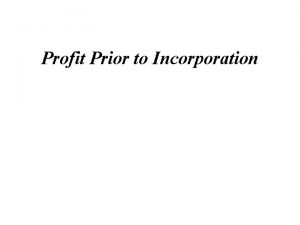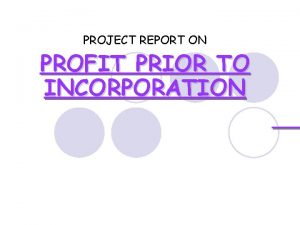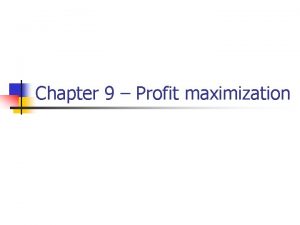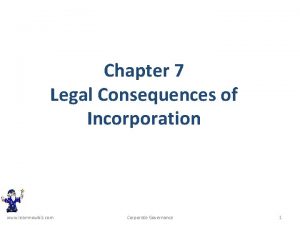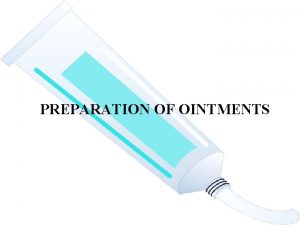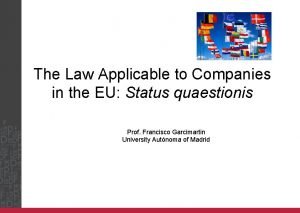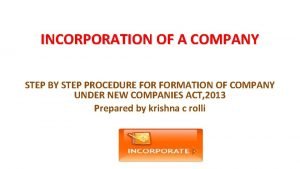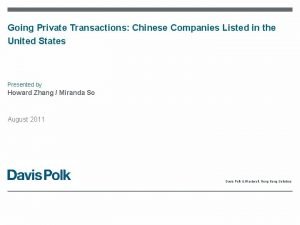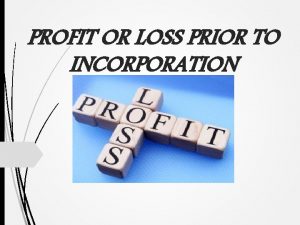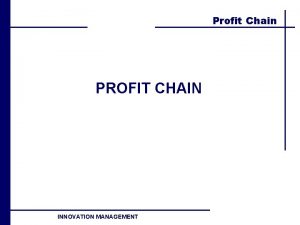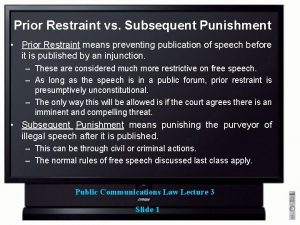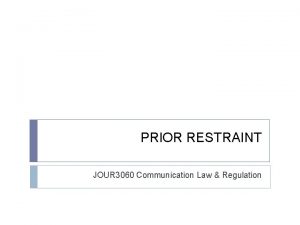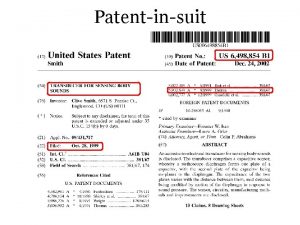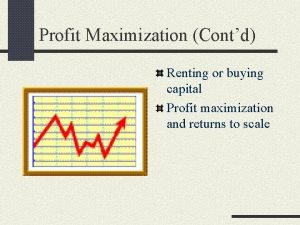Profit Prior to Incorporation Incorporation Meaning Incorporation Meaning















- Slides: 15

Profit Prior to Incorporation

Incorporation Meaning • Incorporation Meaning: The union of books of accounts of a subsidiary Company with already existing Company (Purchasing Company). • INCORPORATION it can be classified in to Pre incorporation post incorporation period

What Is Profit Prior To Incorporation • "Profit prior to incorporation" is the profit earned or loss suffered during the period before incorporation. It is a capital profit and is not legally available for distribution as dividend because a company cannot earn a profit before it comes into existence. Profit earned after incorporation is revenue profit, which is available for dividend.

Pre-Incorporation and Post Incorporation period • Pre-Incorporation and Post Incorporation period: The period before incorporation and the period after incorporation is called as pre incorporation and post incorporation period.

Example For Pre-incorporation And Post Incorporation Period • Eg 1: X ltd was formed on 1. 4. 2012 to take over the business of Y ltd from 1. 1. 2012. The year ended on 31/3/2012. Calculate the pre and post incorporation period. • Sol: Business was taken over from 1. 1. 2012 Incorporated on 1. 4. 2012 • Therefore pre incorporation period = Jan + Feb + March = 3 months (i, e. period between the business taken over and incorporated) • Post incorporation period = April to Dec = 9 months.

Pre-Incorporation and Post Incorporation Profit: • Private Company starts its business soon after its incorporation whereas Public Company commences its business only after obtaining Certificate of Commencement from the Registrar of the Company. The profit earned before the incorporation period by the company is termed as Pre-incorporation Profit/Profit prior to Incorporation; the profit earned is considered as Capital Profits and is transferred to Capital Reserve A/c.

Contud… • Incase if the company suffers loss prior to incorporation, it is treated as Capital Loss and is transferred to Goodwill A/c. • The Profit/Loss earned by the Companies after incorporation is called as Post incorporation Profit/Loss.

STEPS TO DETERMINE PREINCORPORATION PROFIT/LOSS: 1) Prepare a Trading a/c for the whole period. 2) Calculate Time Ratio and Sales Ratio. Time Ratio can be calculated by taking preincorporation and post-incorporation time. From the eg 1: pre-incorporation period is 3 months Post-incorporation period is 9 months Therefore Time Ratio = 3: 9 or 1: 3 Sales Ratio can be calculated on the sales taken place during pre and post incorporation period.

• Eg 2) M Company was incorporated on 1. 6. 2012 and acquired a business with effect from 1/4/2012. Total sales from 1/4/12 up to 31/3/13 were Rs. 450000. Sales for April and May were double the average sales. Sales from June to September= ¼ of the average monthly sales, sales from November to February = the average monthly sales and the sales in March is Double the average sales.

• • • • • Sol: Average monthly sales = 450000/12 = 37500 (total sales/12 months) Now calculate sales from April to March April – 37500 x 2 = 75000 May – 37500 x 2 = 75000 June- 37500 x ¼ = 9375 July- 37500 x ¼ = 9375 Aug- 37500 x ¼ = 9375 Sep- 37500 x ¼ = 9375 Oct- 37500 = 37500 (because it is equal to average sales) Nov- 37500 = 37500 Dec- 37500 = 37500 Jan- 37500 = 37500 Feb- 37500 = 37500 Mar- 37500 x 2 = 75000 Pre-incorporation sales : Post –incorporation sales 150000 : 300000 1 : 2 Therefore Sales Ratio = 1: 2

And Last Step Is : - • 3) Prepare a net profit statement to analyze pre and post incorporation periods.

Points to be noted while preparing net profit statement • · Gross profit to be calculated on sales ratio. • · Divide all standing expenses or fixed expenses on time basis. E. g. , Salaries, rent, printing & stationery, telephone charges, postage & telegram, general expenses, depreciation, administration expenses, audit fees etc. , • · Divide all variable expenses on sales ratio e. g. , carriage outwards, advertisement, salesman salaries, commission, brokerage, bad debts etc. ,

Contud…. • · Salary of partners, interest on purchase consideration, interest on vendor capital are to be charged to pre-incorporation period( i. e. expenses incurred up to the date of incorporation) • · Some expenses exclusively belong to post incorporation period and they have to be charged for post incorporation e. g. , managing director’s salary, director’s fees, debenture interest, discount on issue of shares, discount on issue of debenture, preliminary expenses written off, underwriting commission written off etc. ,

Contud…. • · Audit fees can be divided for pre-incorporation period or post- incorporation period based on time ratio. Audit fees can also be charged exclusively for post incorporation period, assuming auditing is compulsory for the company) • · Bad debts recovered can be charged to both the period depending on where it relates to. • · Interest received can be charged for both the period based on sales ratio.

 450000/12
450000/12 Profit prior to incorporation
Profit prior to incorporation Normal profit economics
Normal profit economics Economic profit vs accounting profit
Economic profit vs accounting profit Post acquisition profit is which profit
Post acquisition profit is which profit Selective incorporation definition
Selective incorporation definition Selective incorporation definition
Selective incorporation definition Incorporation day.
Incorporation day. Consequences of incorporation
Consequences of incorporation Kappa alpha psi incorporation date
Kappa alpha psi incorporation date What is fusion method of ointment preparation
What is fusion method of ointment preparation Asas place of incorporation
Asas place of incorporation Real seat theory vs incorporation theory
Real seat theory vs incorporation theory Explain ratification of a pre incorporation contract
Explain ratification of a pre incorporation contract Procedure for incorporation of company
Procedure for incorporation of company Howard zhang davis polk
Howard zhang davis polk
